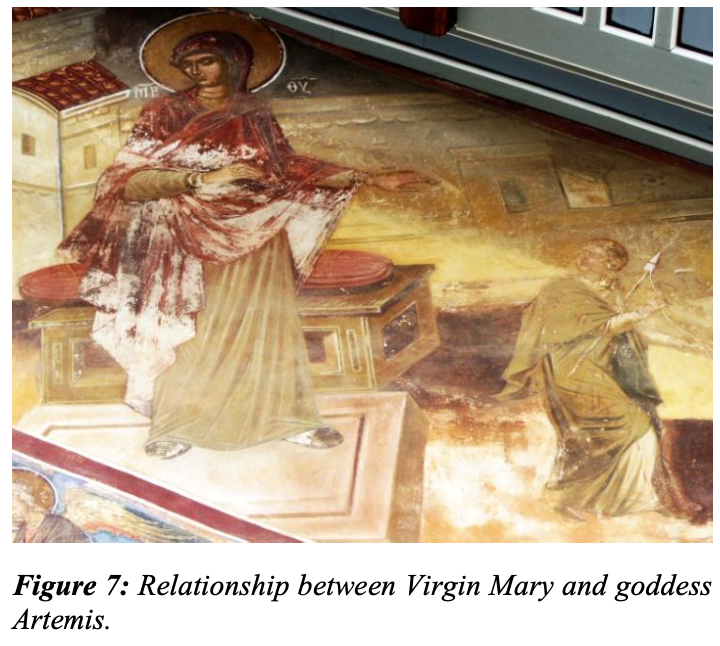Lorem ipsum dolor sit amet, consectetur adipiscing elit. Morbi eu nulla vehicula, sagittis tortor id, fermentum nunc. Donec gravida mi a condimentum rutrum. Praesent aliquet pellentesque nisi.


A Holy Virgin on the male-only consecrated mountain
Mount Athos (Agion Oros) is the oldest and the last monastic state in the Christian Oriental world. A Post-Byzantine fresco of the XVI century from the most important monastery, the Great Lavra, depicts a very unusual Annunciation. Not a Christian saint or martyr but a pagan goddess, Artemis, attends at the fatal encounter between the archangel Gabriel and the Virgin Mary. In addition, the name and giant right ear of this Greek divinity—who is identified with wilderness, hunting and the moon—stands at the center of this depiction. This article contributes an interpretation of the enigma of the incorporation of a religious pagan element in the announcement to the Madonna of the incarnation of Jesus. Its aim is also to detect the ideological program subtended under this composition, and to remark on the iconographical and artistic essentials of the painter’s great theological inspiration. Revealing several levels of meaning, I will accomplish the task by corroborating how this case study is a significant instance of pre-Christian roots in the pagan Greco-Roman civilization which, in turn, inherited several features of the divine in female form from the rich cultural traditions of the horticultural Neolithic “Old Europe” according to Marija Gimbutas’ pioneering scholarship.